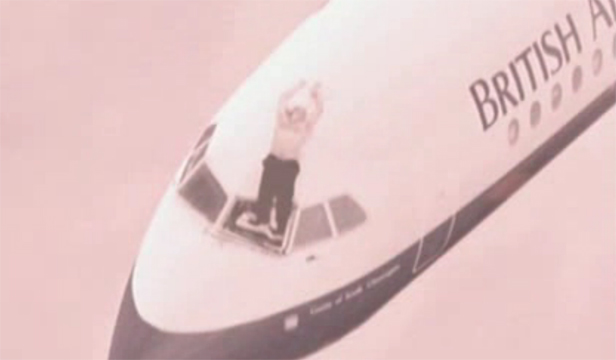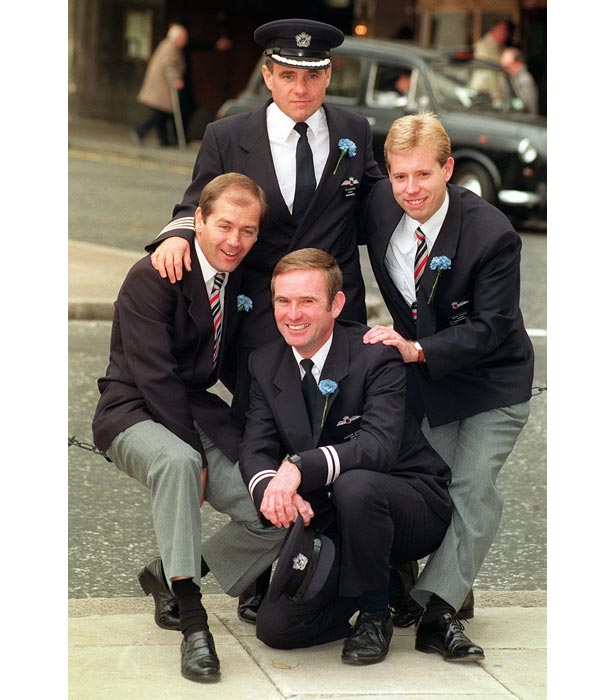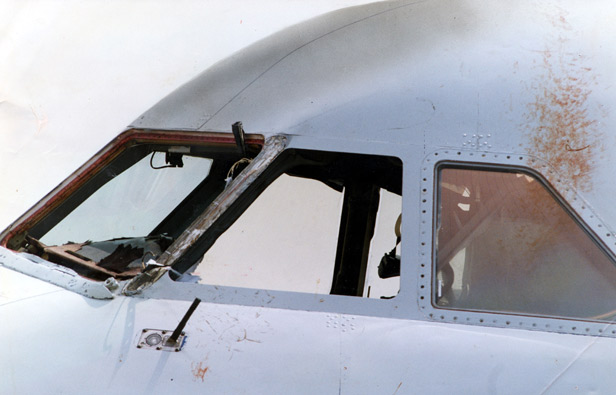mzeiya
Elder Lister
Quick-thinking cabin crew saved Captain Tim Lancaster’s life when a faulty window blew out at 17,300 feet and hauled him outside the jet for 22 minutes.

An aviation disaster was narrowly averted on this day in 1990, when a wrongly-installed panel of the windscreen on British Airways Flight 5390 fell out, causing the plane’s cockpit to decompress and its captain to be pulled halfway out of the aircraft at over 17,000 feet.
BA 5390 left Birmingham Airport at 7.20am, heading for Malaga in Spain. At the controls were Captain Tim Lancaster, 42, and his co-pilot, 39-year-old Alastair Atchison, both experienced flyers, and their take-off was routine.
Less than 15 minutes into the flight, with the plane at 17,300 feet over Oxfordshire, there was a loud bang in the cockpit, and the windscreen on the captain’s side blew out from its mooring, causing immediate decompression.

Both pilots had loosened their harnesses, and Lancaster was forcefully pulled toward the open window by the rush of air. As the reconstruction from the National Geographic Channel's documentary Air Crash Investigation (above) shows, the whole top half of his body was dragged out of the plane, with only his legs remaining inside, caught on the flight controls.
Flight attendant Nigel Ogden, on the flight deck at the time, quickly grabbed hold of Lancaster’s belt, while the stricken captain was flung from side to side by powerful winds and began to lose consciousness in the thin air at that altitude.

Ogden, too, began to suffer from frostbite and exhaustion, and was relieved by chief steward John Heward and flight attendant Simon Rogers (pictured above with Lancaster, standing, and Atchison, middle). Lancaster’s head was now banging against the side of the cockpit, leading the crew to believe he had died. Fortunately they held onto him in fear that his body might get sucked into the plane’s engine.
Given permission for an emergency landing at Southampton Airport, Atchison brought the plane down safely as the crew hung on grimly to Lancaster. The pilot was discovered to be alive and was rushed to hospital as frightened passengers disembarked. The whole ordeal had lasted 22 minutes.
BA Flight 5390 – Did you know?

An aviation disaster was narrowly averted on this day in 1990, when a wrongly-installed panel of the windscreen on British Airways Flight 5390 fell out, causing the plane’s cockpit to decompress and its captain to be pulled halfway out of the aircraft at over 17,000 feet.
BA 5390 left Birmingham Airport at 7.20am, heading for Malaga in Spain. At the controls were Captain Tim Lancaster, 42, and his co-pilot, 39-year-old Alastair Atchison, both experienced flyers, and their take-off was routine.
Less than 15 minutes into the flight, with the plane at 17,300 feet over Oxfordshire, there was a loud bang in the cockpit, and the windscreen on the captain’s side blew out from its mooring, causing immediate decompression.
Both pilots had loosened their harnesses, and Lancaster was forcefully pulled toward the open window by the rush of air. As the reconstruction from the National Geographic Channel's documentary Air Crash Investigation (above) shows, the whole top half of his body was dragged out of the plane, with only his legs remaining inside, caught on the flight controls.
Flight attendant Nigel Ogden, on the flight deck at the time, quickly grabbed hold of Lancaster’s belt, while the stricken captain was flung from side to side by powerful winds and began to lose consciousness in the thin air at that altitude.
Ogden, too, began to suffer from frostbite and exhaustion, and was relieved by chief steward John Heward and flight attendant Simon Rogers (pictured above with Lancaster, standing, and Atchison, middle). Lancaster’s head was now banging against the side of the cockpit, leading the crew to believe he had died. Fortunately they held onto him in fear that his body might get sucked into the plane’s engine.
Given permission for an emergency landing at Southampton Airport, Atchison brought the plane down safely as the crew hung on grimly to Lancaster. The pilot was discovered to be alive and was rushed to hospital as frightened passengers disembarked. The whole ordeal had lasted 22 minutes.
BA Flight 5390 – Did you know?
- BA Flight 5390, a BAC One-Eleven, was carrying 81 passengers and six crew at the time of the incident.
- When the window was blown out, the force of the air rushing out of the aperture caused the door of the flight deck to blow inwards and fall onto the plane’s controls. The throttle was forced open, meaning that the plane was accelerating as it began to lose altitude.
- Heading downwards at 80 feet a second and with winds of -17C rushing around them, the crew were forced to cling onto the unconscious Lancaster, whose weight was made equivalent to 500lb due to the suction force of the air outside the plane.
- Lancaster was treated for fractures to his right arm, left thumb and right wrist, as well as frostbite and shock. Remarkably, he returned to work within five months.
- Flight attendant Nigel Ogden suffered a dislocated shoulder and frostbite to his face and eye. He returned to work after a break but suffered post-traumatic stress and took early retirement in 2001. No-one else involved in the incident was injured.
- Accident investigators discovered that when the windscreen had been refitted to the plane the night before, the wrong bolts had been used to secure it; they were little more than half a millimetre too small, and had failed under intense air pressure.
- The bolts had actually replaced other incorrect ones; the engineer, working under pressure and without reference to manuals, had simply replaced the old bolts with new ones on a like-for-like basis.
- As a result of the incident, windscreens on British Airways planes are now secured by bolts on the inside of the plane, rather than the outside, putting them under even less pressure.
